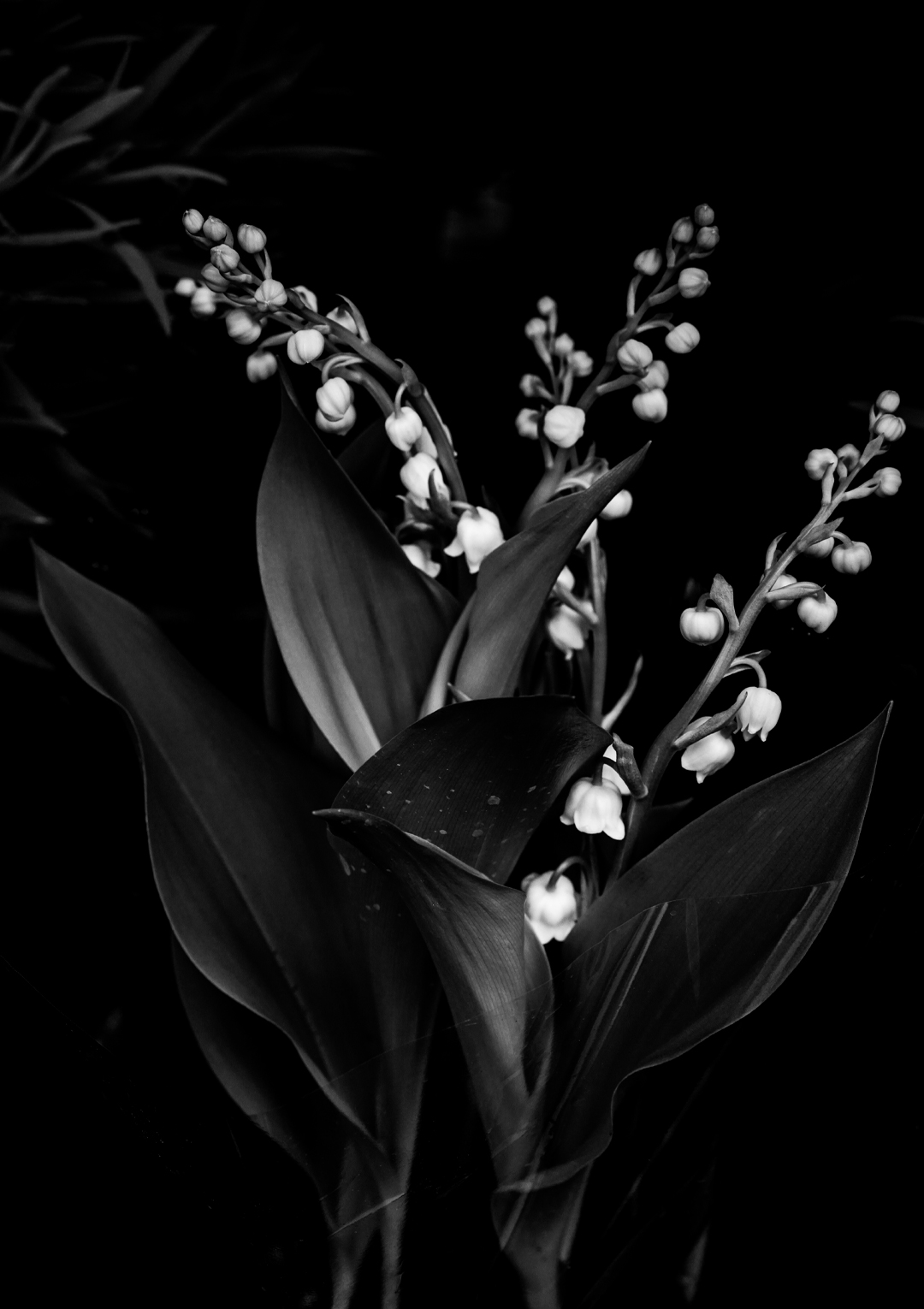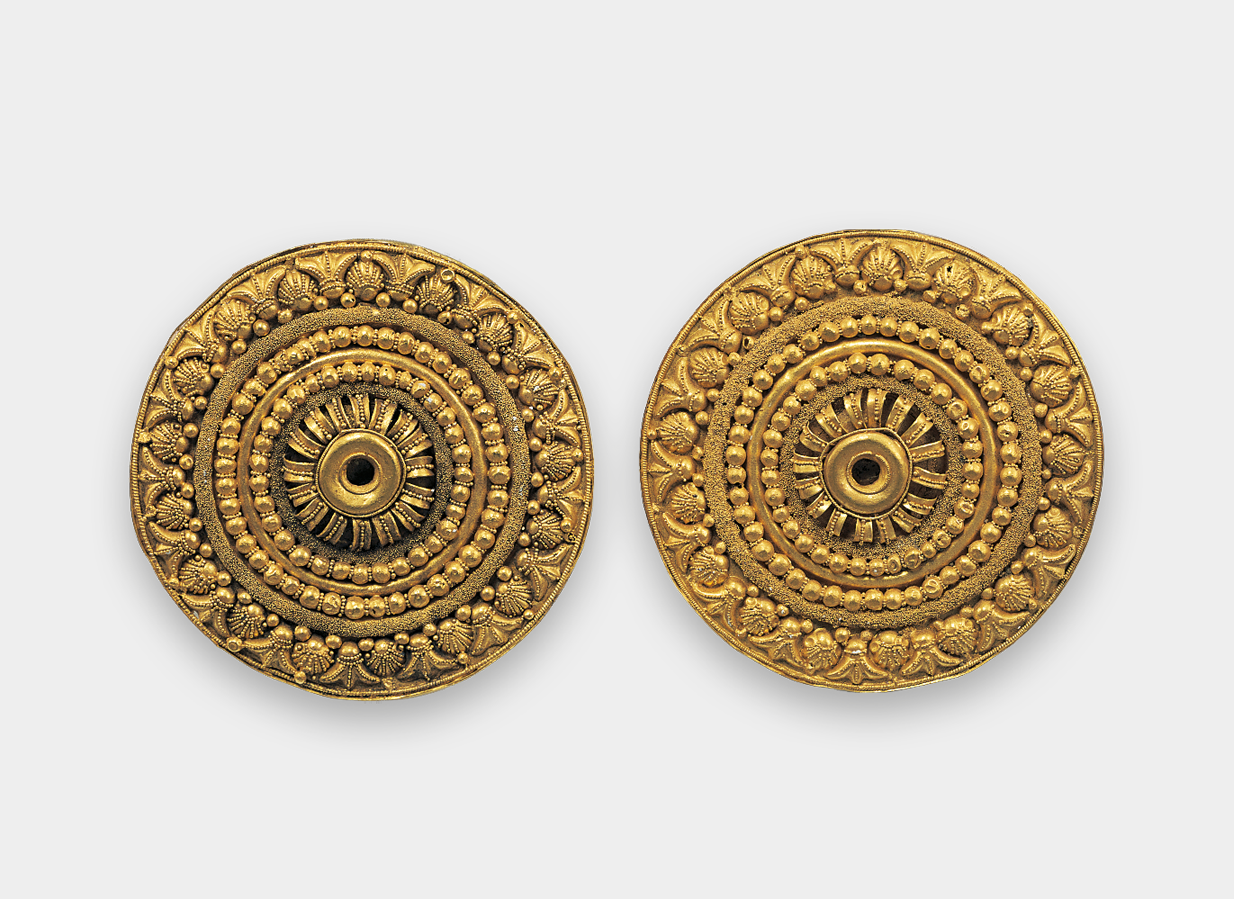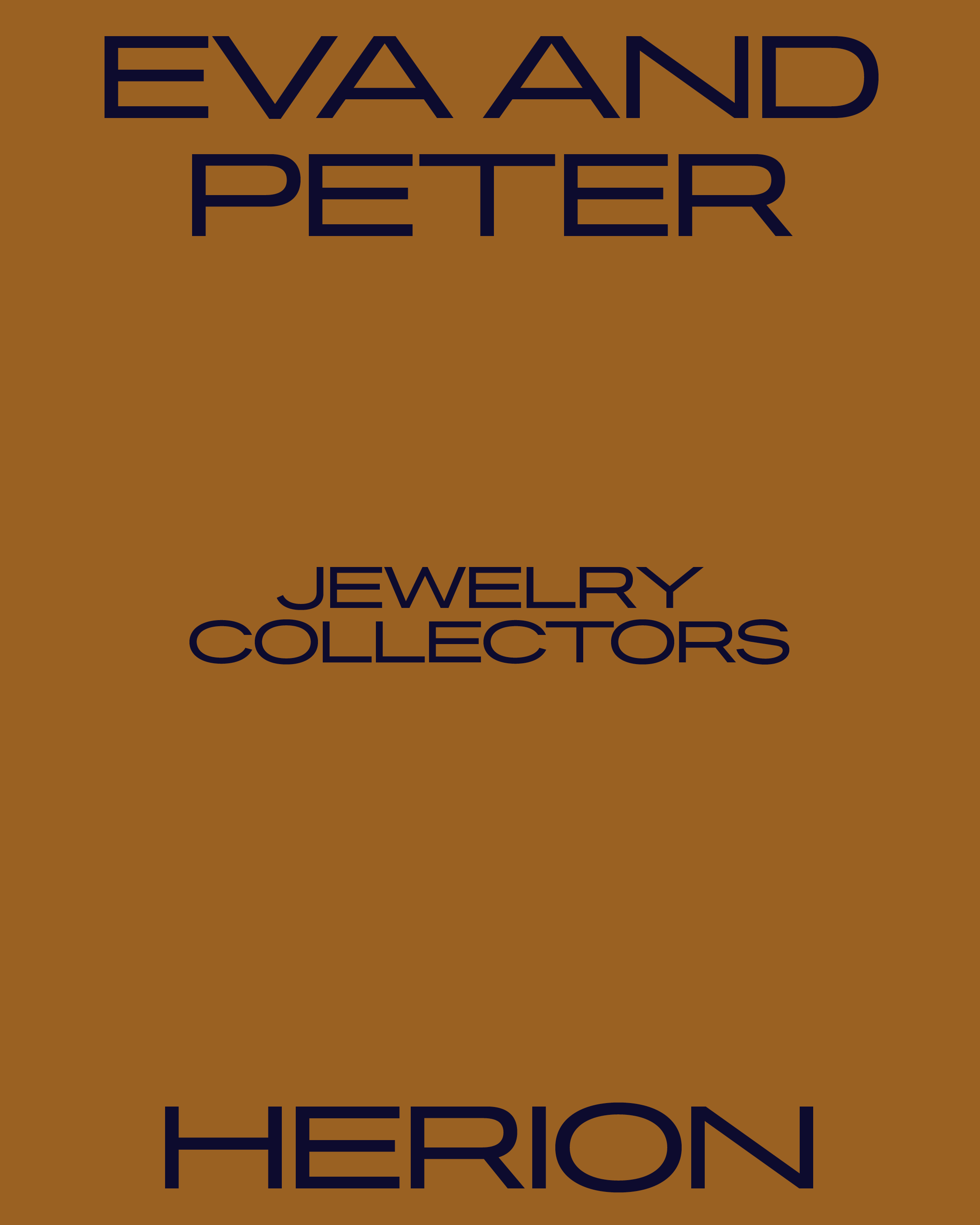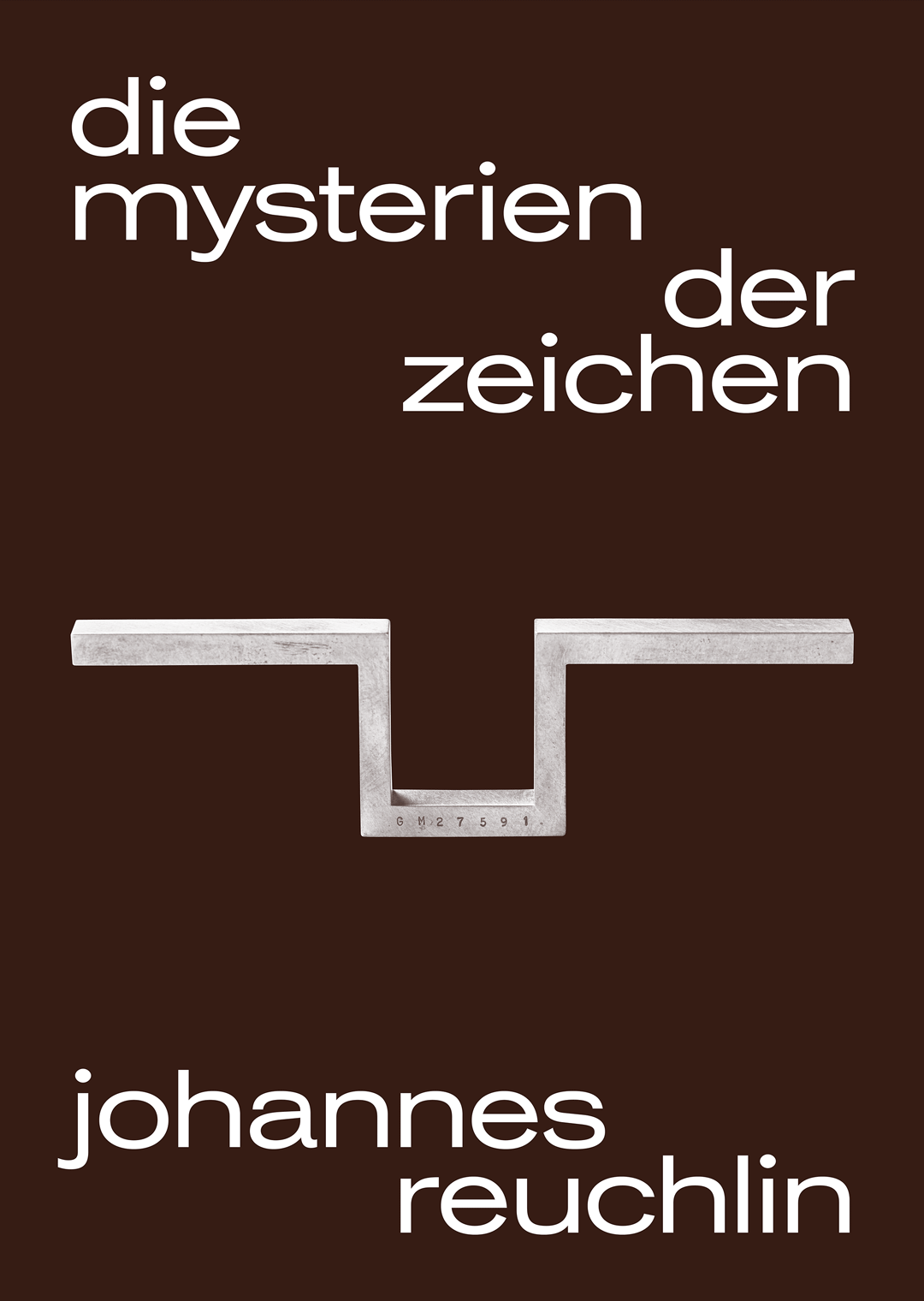Wafer-thin gold foil was traditionally used to create exquisite wreaths, often imitating laurel branches and flowers with naturalistic precision. This is well observed in Schmuckmuseum Pforzheim’s Greek funeral wreath dating back to 400 BC. Between the furor of lancet-shaped leaves, a collection of small flowers wind in and out, each centrally structured with five petals and a bundle of stamens.
The flowers hail from the rosette shape, or a circular arrangement of petals, and only when they are reduced in size do they appear to be imitating real flowers. The reference to the rosette, which was one of the earliest decorative elements, brings us closer to its meaning. It is almost never the stylized image of a flower, but is read as a sign of the sun. Flowers as a symbol for growth and vitality symbolize the omnipresence of the sun in earthly form.




